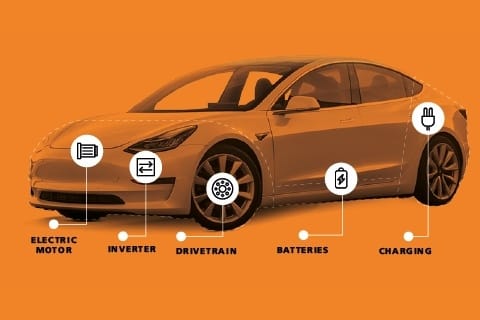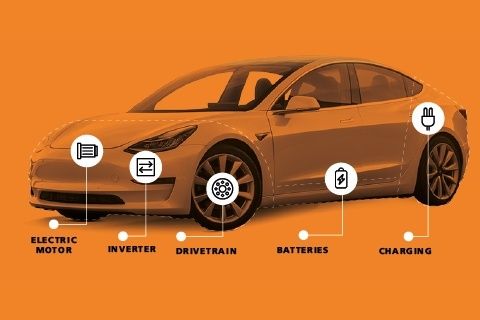How Do All-Electric Cars Work?
All-electric vehicles(BEVs) have an electric motor instead of an internal combustion engine. The vehicle uses a large traction battery pack to power the electric motor and must be plugged into a wall outlet or charging equipment, known as electric vehicle supply equipment (EVSE)


All-electric vehicles(BEVs) have an electric motor instead of an internal combustion engine. The vehicle uses a large traction battery pack to power the electric motor and must be plugged into a wall outlet or charging equipment, known as electric vehicle supply equipment (EVSE). Because it runs on electricity, the vehicle emits no exhaust from a tailpipe and does not contain the typical liquid fuel components, such as a fuel pump, fuel line, or fuel tank.
Key Components of an All-Electric Car
Battery (all-electric auxiliary): In an electric drive vehicle, the auxiliary battery provides electricity to power vehicle accessories.
Charge port: The charge port allows the vehicle to connect to an external power supply to charge the traction battery pack.
DC/DC converter: This device converts higher-voltage DC power from the traction battery pack to the lower-voltage DC power needed to run vehicle accessories and recharge the auxiliary battery.
Electric traction motor: Using power from the traction battery pack, this motor drives the vehicle's wheels. Some vehicles use motor generators that perform both the drive and regeneration functions.
Onboard charger: Takes the incoming AC electricity supplied via the charge port and converts it to DC power for charging the traction battery. It also communicates with the charging equipment and monitors battery characteristics such as voltage, current, temperature, and state of charge while charging the pack.
Power electronics controller: This unit manages the flow of electrical energy delivered by the traction battery, controlling the speed of the electric traction motor and the torque it produces.
Thermal system (cooling): This system maintains a proper operating temperature range of the engine, electric motor, power electronics, and other components.
Traction battery pack: Stores electricity for use by the electric traction motor.
Transmission (electric): The transmission transfers mechanical power from the electric traction motor to drive the wheels.
The three main ways to charge an EV are:
Level 1 Charging
Using a 120-volt outlet, Level 1 home charging requires no special equipment, but it provides the slowest charging cycle compared to specialty EVSEs. This charging method provides an EV with 2 to 5 miles of range each hour of charging.
Level 2 Charging
Using a 220- or 240-volt outlet, Level 2 charging requires specialty equipment in-home or the use of a public charging station.
Also works for all BEVs. This EVSE is much faster than a Level 1 charger, compatible with all plug-in vehicles, and provides 10 to 25 miles of range each hour of charging.
DC Fast Charging
This specialty EVSE converts AC electricity into DC electricity within the charging station, which delivers energy into an EV’s battery pack faster than Level 1 and 2 chargers. These fast-charging stations can charge a traction battery pack from 15 to 45 minutes, but they are only compatible with certain plug-in vehicles.




